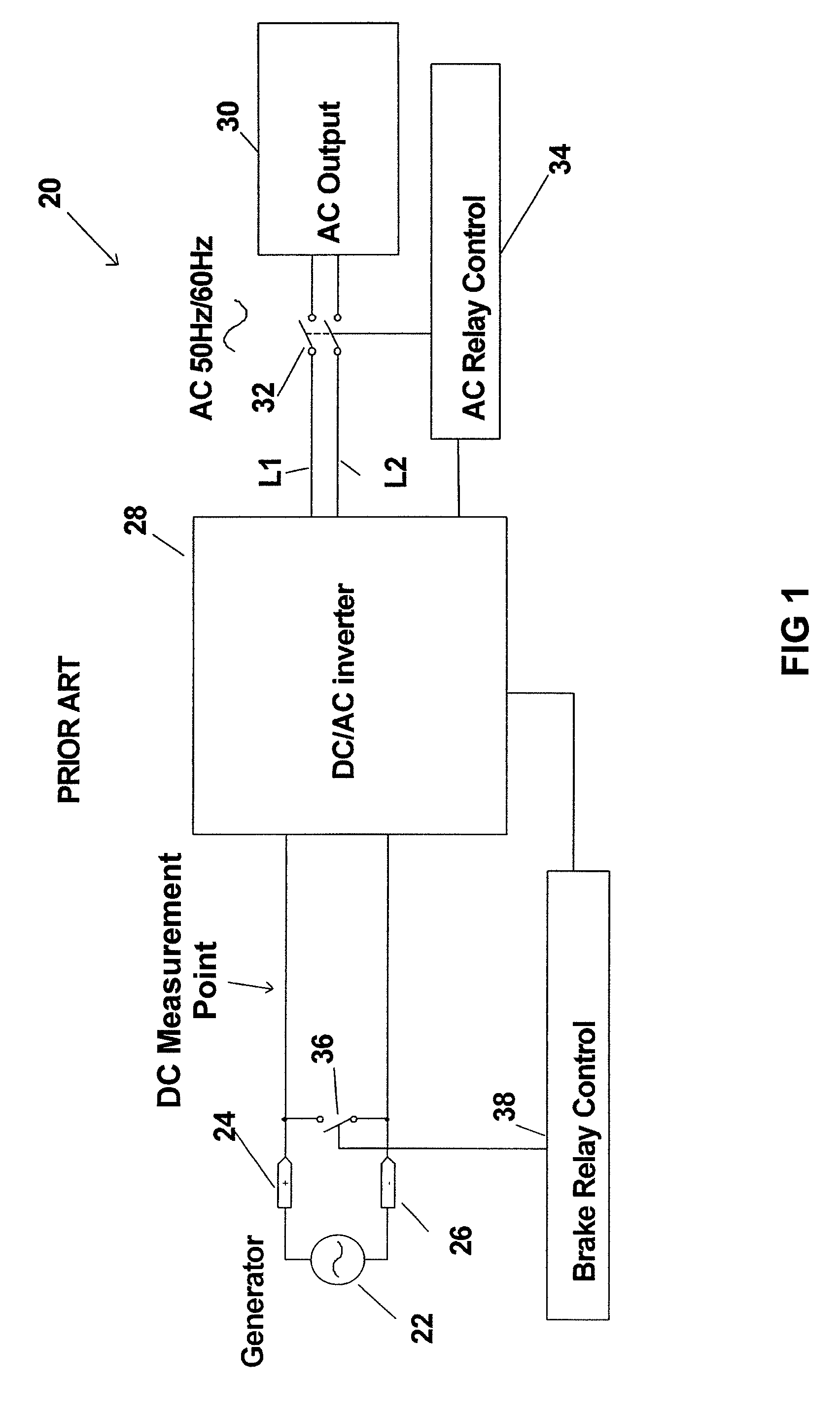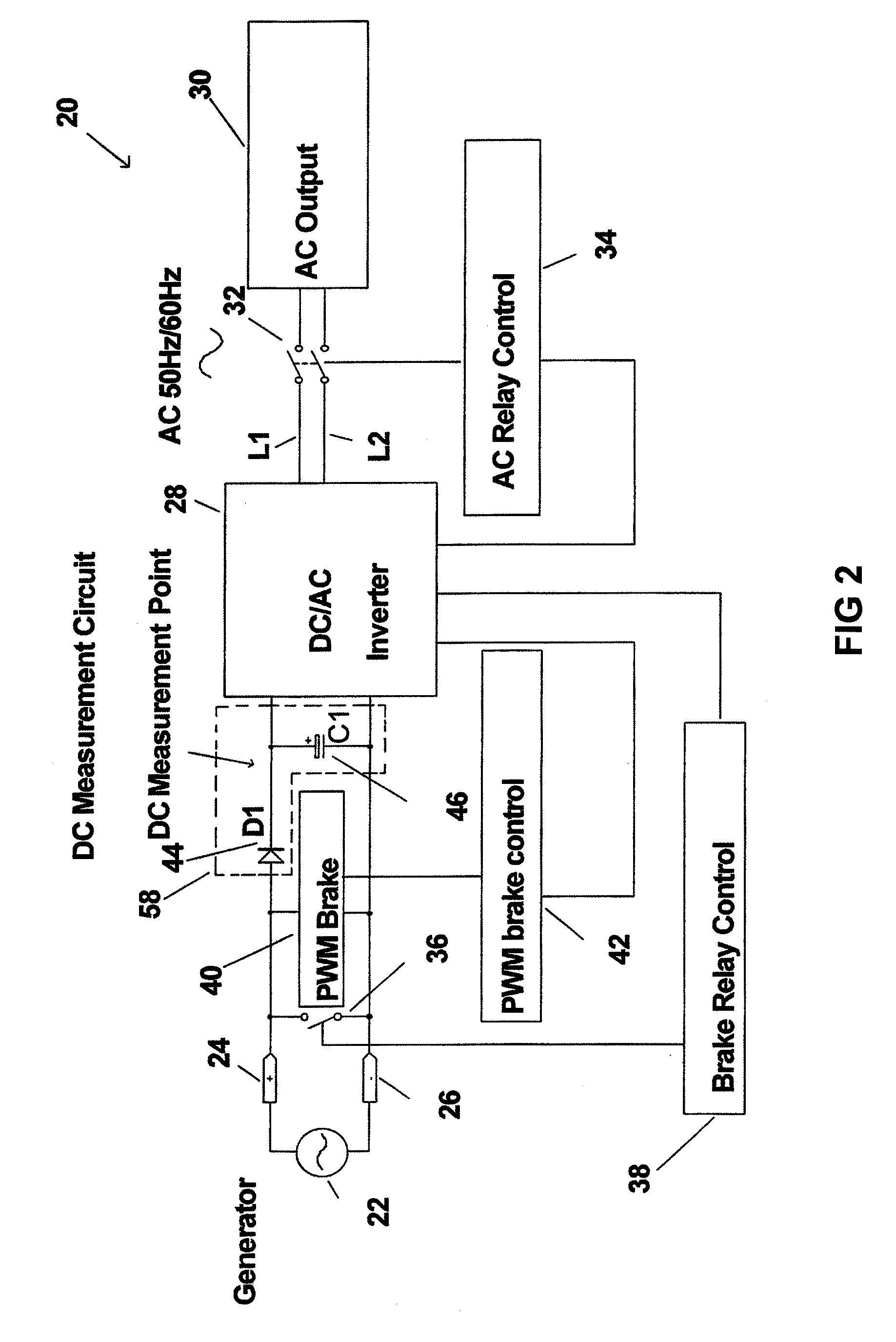Speed sensing circuit for a wind turbine generator
a technology of speed sensing circuit and wind turbine generator, which is applied in the direction of electric generator control, machine/engine, dynamo-electric converter control, etc., can solve the problems of low efficiency inconvenient operation of mechanical braking system, and inability to optimize the operation time and thus power output of wind turbine generator,
- Summary
- Abstract
- Description
- Claims
- Application Information
AI Technical Summary
Benefits of technology
Problems solved by technology
Method used
Image
Examples
Embodiment Construction
[0032]FIG. 1 is a block diagram of a wind turbine generator system 20 that incorporates a prior art Brake Relay 36 for electronically braking the generator. 22. FIG. 2 is a block diagram of a wind turbine generator system 20 that incorporates a prior art Brake Relay 36 for electronically braking the generator 22 and additionally incorporates a PWM Brake 40 that is coordinated with the prior art Brake Relay 36. FIGS. 3-5 relate to a PWM Brake Control Circuit 42 minus the novel speed sensing circuit in accordance with the present invention. FIGS. 6-8 relate to the novel speed sensing circuit in accordance with the present invention.
[0033]As mentioned above, some known systems utilize a brake relay, used to short out the wind turbine generator output for a nominal period, such as 10 seconds or more, any time the generator voltage exceeds a threshold level indicative of an over speed condition (i.e “first threshold voltage”). Thus, during conditions when high wind speeds exist and the o...
PUM
 Login to View More
Login to View More Abstract
Description
Claims
Application Information
 Login to View More
Login to View More - R&D
- Intellectual Property
- Life Sciences
- Materials
- Tech Scout
- Unparalleled Data Quality
- Higher Quality Content
- 60% Fewer Hallucinations
Browse by: Latest US Patents, China's latest patents, Technical Efficacy Thesaurus, Application Domain, Technology Topic, Popular Technical Reports.
© 2025 PatSnap. All rights reserved.Legal|Privacy policy|Modern Slavery Act Transparency Statement|Sitemap|About US| Contact US: help@patsnap.com



